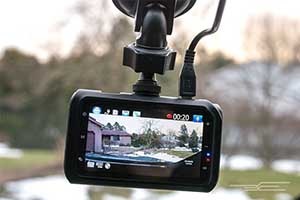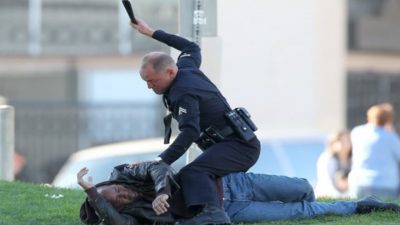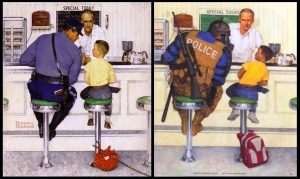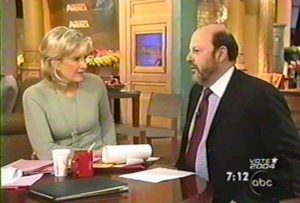![Police Misconduct Attorney]() CALIFORNIA PENAL CODE SECTION 69 LAWYER
CALIFORNIA PENAL CODE SECTION 69 LAWYER
In Terry v. Ohio, 392 U.S. 1 (1968), the United States Supreme Court held for the first time in the history the American Republic that a police officer could seize a civilian and frisk him for weapons, without a warrant, and on less than probable cause to believe that the person had committed a crime.
Since a Judge cannot order any warrant on less than probable cause, the standard established by the Founding Fathers in 1791 to seize a person has been lowered by the Supreme Court, to “reasonable suspicion”, to accommodate “modern methods of policing.” This loosening of the standard of a seizure of a person, placing the civilian’s liberty basically at the whim of the police, has case by case, year by year, led to the degeneration of the police’s respect for the public, and for “curbside justice” often followed by a bogus arrest for a resistance offense, for those now daring to verbal oppose or challenge police actions.
This present state of affairs, where the police can point a gun at your head, prone you out on the ground, handcuff you, place inside of a police car, and search you and your belongings, all on the flimsiest of suspicion of criminal conduct by the civilian, if real suspicion at all, is the manifestation of exactly what Mr. Justice William O. Douglas, in his sole dissenting opinion in the Supreme Court’s Opinion in Terry v. Ohio, 392 U.S. 1 (1968); that Opinion serving as the underlying justification for the seizure of persons by the police, at their whim, and in any time and manner in which they please:

“The infringement on personal liberty of any “seizure” of a person can only be “reasonable” under the Fourth Amendment if we require the police to possess “probable cause” before they seize him. Only that line draws a meaningful distinction between an officer’s mere inkling and the presence of facts within the officer’s personal knowledge which would convince a reasonable man that the person seized has committed, is committing, or is about to commit a particular crime.
In dealing with probable cause, . . . as the very name implies, we deal with probabilities. These are not technical; they are the factual and practical considerations of everyday life on which reasonable and prudent men, not legal technicians, act.” Brinegar v. United States, 338 U.S. 160, 175.
To give the police greater power than a magistrate is to take a long step down the totalitarian path. Perhaps such a step is desirable to cope with modern forms of lawlessness. But if it is taken, it should be the deliberate choice of the people through a constitutional amendment. Until the Fourth Amendment, which is closely allied with the Fifth, [n4] is rewritten, the person and the effects of the individual are beyond the reach of all government agencies until there are reasonable grounds to believe (probable cause) that a criminal venture has been launched or is about to be launched.
There have been powerful hydraulic pressures throughout our history that bear heavily on the Court to water down constitutional guarantees and give the police the upper hand. That hydraulic pressure has probably never been greater than it is today.
Yet if the individual is no longer to be sovereign, if the police can pick him up whenever they do not like the cut of his jib, if they can “seize” and “search” him in their discretion, we enter a new regime. The decision to enter it should be made only after a full debate by the people of this country.” (Terry v. Ohio, 392 U.S. 1 (1968), Douglas, J., Dissenting.)
Now, a failure to immediately comply with police orders to civilians, often results in a brutal arrest for a resistance offense, such as violation of Cal. Penal Code 148(a)(1); resisting or obstructing or delaying a peace officers in the performance of their duties; a misdemeanor. If the police beat you up pretty badly, they’d at least also charge you with battery on a peace officer; Cal. Penal Code § 242/243(b); also a misdemeanor. Once in a while they’d throw in a charge of assault on a peace officer, Cal. Penal Code § 240/241(c). Although in years gone past, the crime of choice to falsely accused victims of police abuse of, was violation of Cal. Penal Code § 148(a)(1) (resisting or obstructing or delaying a peace officers engaged in the lawful performance of his/her duties; a misdemeanor), things have changed. Although the San Bernardino County Sheriff’s Department and District Attorney’s Office has falsely charged their victims for years with violation of Cal. Penal Code § 69; (threatening or using force or violence on a public officer to resist them or to prevent or deter them from performing a duty of their office) ever since California enacted its “Three Strikes Sentencing Law“, more and more police agencies are charging their arrestees with violation of Cal. Penal Code § 69.
CAL. PENAL CODE SECTION 69; THE HAMMER OF OPPRESSION; GENERALLY.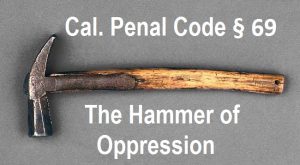
As discussed in other articles in this website, bogus arrests and prosecutions for “resistance offenses” act as the legal “tool” with which police agencies and their protectors, the District Attorney’s Offices and right-wing Judges, use to convict the innocent victims of abuse by police officer, in a manner that precludes them from obtaining civil redress for the Constitutional violations perpetrated against them. Their First Amendment right to petition the government for redress of grievances; to be able to successfully sue those who violated their Constitutional rights.
Bogus criminal prosecutions against innocents are procured by police officers, and are filed by public prosecutors, to insulate the police from civil liability and obloquy, for their Constitutional violations against innocents. With many peace officers and their employing agencies, persuasive lying isn’t a vice; it’s a virtue. Police agencies have established routine practices and procedures for dealing with situations involving their officers abusing innocents and others; especially situations involving the use of unreasonable force and false arrests. These established routine practices and procedures, are designed to minimize the civil and criminal liability of violating peace officers, and the civil liability of their employing entities, and to protect peace officers from internal discipline, and, in very rare cases, criminal liability.
Police aren’t legal scholars, but they know this; that if they procure your bogus criminal prosecution for the same incident in which they abused you, and you are convicted, especially of a “resistance offense” , that you usually can’t sue them for anything; no matter how unlawful, malicious, despicable or felonious. They’re generally right.
People in policy making positions in police agencies, know that once the police have crossed that line and have violated the Constitutional rights of a civilian, there’s no turning back. There are no apologies. That never happens. What there is, is a series of systemic, systematic and routine governmental defensive tactics, that automatically kick into play when the police abuse a civilian. The victim of police outrages are immediately treated as the perpetrators; of what, the police usually still have to concoct, after they access what videos, audios and witnesses exist, and which ones they can’t conceal or otherwise discredit.
That’s why police agency spokesmen speak in vague generalities; always stating that the some officer was threatened or felt that way, and that the investigation of themselves, by them selves, is continuing. What they really mean is the that the police agency “basic story” and “party line”, is their actually covering-up and falsely and maliciously criminally implicating the decedent (when there’s no video of good enough quality and materiality), or not going to that extreme (because there is evidence like a good video recording), but finding some way to deal with the undeniable.
The victims of police outrages, are often immediately subjected to coerced custodial police interrogation; even if that entails some Patrol Sergeant shoving his digital audio recorder in your face, while your anesthetized, and will say anything into the recorder, if the Patrol Sergeant will just leave you alone. This is neither a joke, nor uncommon.
Thereafter, the violating police agency usually brings “the case” (the concocted bogus police version of the events (again, this is no joke) to the District Attorney’s Office for review for potential criminal prosecution; especially for a “resistance offense“. If it’s a City police department, then the City police agency may also submit misdemeanor cases to their City Attorney’s Offices for review for criminal misdemeanor prosecutions. The police usually only bring the evidence to the District Attorney’s Office that they want to; often and routinely excluding from disclosure, evidence that would show the accused’s innocence, and expose the arresting officers and their employing entity to civil liability.
CAL. PENAL CODE SECTION 69; THE HAMMER OF OPPRESSION; MAKING THE VICTIM’S OF POLICE ABUSE PLEAD GUILTY BECAUSE THEY CAN’T MAKE BAIL.
ABUSE PLEAD GUILTY BECAUSE THEY CAN’T MAKE BAIL.
For the various reasons discussed below, police arrests for, and criminal prosecutions for violation of Cal. Penal Code § 69; preventing, dissuading or resisting a pubic officer from performing a duty of their office, by threat or use of force or violence, is the latest legal tool in the tool-bag of the police state; police running wild, and rather than be restrained by the District Attorney’s Office, they’re protected by the District Attorney’s Office, by considering the police to be their real “client”, and by bringing bogus resistance offense criminal prosecutions, to beat you into submission; to beat you out of being able to sue the police who violated you, by either convicting you, or by literally extorting you to agree to plead your rights away. See, MacDonald v. Musick, 425 F.2d 373 (9th Cir. 1970)(Court or DA conditioning dismissal of criminal action on stipulation to probable cause for arrest is “extortion” under California law; a felony.) Notwithstanding, MacDonald v. Musick, the Supreme Court has held that there may be noble reasons for the government to extort away your right to sue the police, who not only beat you up and falsely arrested you, but also procured your bogus criminal prosecution, and that not all “release-dismissal” agreements (i.e. We’ll let you out of jail or not continue to prosecute you if your promise not to sue us) are unenforceable. Town of Newton v. Rumery, 480 U.S. 386 (1987.) That’s way things work the modern police state. They can’t do it themselves, however; they need the approval of the body politic. They need to be able to go into court, and prevail, when they either testify against criminal defendants in criminal cases that they are involved with, or when they get sued, civilly, for their constitutional transgressions. They need you; in the ballot booth, and in the civil and criminal jury pools, to have their backs; to support them, to believe in them.
The use of Section 69 as a tool to extract truly involuntary guilty pleas to crimes against peace officer, works well. This is so, notwithstanding the fact that the person being arrested for, or being falsely prosecuted for violation of Section 69, is almost always, the victim of a police beating, or at least a good old fashion false arrest, often in retaliation for protected speech, by officers will frail egos. It’s regular and commonly used now by the government, and is the modern preferred “resistance offense” of arrest of choice, in today’s “Hammer Of Oppression.” Here’s why.
The front line tool used by the government to beat you down, to beat you into submission, that you either cannot, or will not, dare to vindicate your honor, your dignity and your legal rights, is an arrest by a peace officer for violation of Cal. Penal Code 148(a)(1) and/or Cal. Penal Code § 69; threatening or using force or violence on a public officer to resist them, or to prevent or deter them from performing a duty of their office. So, when the police do you dirty, and violate your federal Constitutional rights and your rights under California law (i.e. use unreasonable force and false arrests), the institutionalized police procedures to minimize liability to them are employed; not to seek the truth, but to suppress it. Their “tool” at the scene: a coerced un-Mirandized custodial statement, coupled with a bogus arrest for violation of Cal. Penal Code 148(a)(1) and/or Cal. Penal Code § 69, which is often accompanied by other “resistance offenses.”
Unlike other “resistance offenses”, Section 69 has one distinct feature; when the police arrest you for (usually bogus) violation of that offense, they can charge you with a felony, and require that you post bail to get out of jail. This is important to the police, because many people either don’t have the financial resources to post bail, or simply don’t want to pay to do so. The typical bail for one arrested for violation of Section 69 is $20,000.00 to $25,000.00. Bail bondsmen usually charge 10% of the amount of the bail for their fee, although depending on the amount of the bail and how much of a chance of you being a flight risk, they may charge as little as 6%-8% of the bail amount. There will always be a certain percentage of people who can’t make that bail. If they can’t or won’t post bail, the police are required to bring them to court within two days. Cal. Penal Code § 825. See also, County of Riverside v. McLaughlin, 500 U.S. 44 (1991.)
When those who cannot afford to, or are not desirous of, posting bail, many innocents will take a plea bargain to a resistance offense, or even to de minimis crimes like disturbing the peace (Cal. Penal Code § 415), just to get out of jail. It’s very common for innocents (usually the victims of police brutality and false arrests) to do so. So, for the police, there will be a certain percentage of innocents who they beat, falsely arrested and are trying to frame (when they are the victim), who plead out and plead away their right to sue.
If a police officer uses unreasonable force upon a civilian, or otherwise violates their Constitutional rights, their first and immediate reaction is to handcuff their victim and to take them to jail. It’s the old blame shifting game (i.e. “The suspect struck my fist with his jaw.”) Thus defensive too number one; arrest your victim, and make-up some bogus material facts to falsely show that the civilian victim committed a crime. These day, officers have to be careful as to how much they can or should lie in their arrest reports. They realize that with the advent of smart phones, and almost everyone is now a reporter / recorder, and they don’t want to author a police report; only to have it shown to be bogus on YouTube. Therefore, they need to determine if they or their fellow officers video and/or audio recorded their actions, and if so, what was recorded, prior to writing their bogus arrest reports. They also need to know if there was routine video monitoring that could have shown what really did happen, and, if so, find a way to confiscate and destroy / conceal the contents of any such enlightening video / audio.
The front line tool used by the government to beat you down, to beat you into submission, that you either cannot, or will not, dare to vindicate your honor, your dignity and your legal rights, is an arrest by a peace officer for violation of Cal. Penal Code 148(a)(1) and/or Cal. Penal Code § 69; threatening or using force or violence on a public officer to resist them, or to prevent or deter them from performing a duty of their office. So, when the police do you dirty, and violate your federal Constitutional rights and your rights under California law (i.e. use unreasonable force and false arrests), the institutionalized police procedures to minimize liability to them are employed; not to seek the truth, but to suppress it. Their “tool” at the scene: a coerced un-Mirandizedcustodial statement, coupled with a bogus arrest for violation of Cal. Penal Code 148(a)(1) and/or Cal. Penal Code § 69, which is often accompanied by other “resistance offenses.”
Standard Operating Police Procedures and standard real world customs and practices of modern police agencies, almost always requires the immediate arrest and handcuffing of the innocent victims of police use of unreasonable force upon them. If you’re not in handcuffs but have noticeable physical injuries, then something is amiss. If you didn’t do anything wrong that required that level of the use of force upon you, then why did the police beat you up? Another words, if the police beat you up and there are visible injuries, there has to be some explanation; some line or story, or even a theme, as to why. Moreover, if you really did something that bad, then, of course, you belong in handcuffs, so, quess what? You get handcuffed, even though the peace officer was the perpetrator. This is normal. This is standard operating procedure in modern policing.
Initially, at the scene of the abuse of innocents by the police, many police agencies, such as the Los Angeles County Sheriff’s Department, are required to obtain a coerced recorded statement from you, to get you to agree on a recording, that the cops who just beat you up and falsely arrested you, were acting reasonably. The call it an “Administrative Use Of Force Investigation.” They do this because of a United States Supreme Court case that held that there is no violation of one’s Fifth Amendment right against self-incrimination when an arrestee is subjected to custodial police interrogation; at least a right, the violation of which, can form the basis for civil liability. Chavez v. Martin, 538 U.S. 760 (2003) (no Fifth Amendment violation because plaintiff was not compelled to be a witness against himself “at trial”.) Some police agencies were badgering un-Mirandized custodial statements from their victims, but Chavez v. Martin gives them the legally colorable argument, that there’s no Fifth Amendment / Self-Incrimination violation if the police torture a confession out of you, KGB style.
Notwithstanding Chavez v. Martin, Miranda v. Arizona, 384 U.S. 436 (1966) still excludes from the prosecution’s evidence for their case-in-chief at a criminal trial criminal defendant’s responses to the very same custodial interrogation that the plaintiff sue for in Chavez v. Martin. The Los Angeles Sheriff’s Department obtains these custodial statements, in violation of Miranda v. Arizona, 384 U.S. 436 (1966), that provides that prior to custodial interrogation, that the police must advise one of their right to counsel and their right against self-incrimination, if the police plan on using your responses to their questioning of you, while you’re in police custody. If the police don’t advise you of your right to counsel and your right against self-incrimination prior to custodial interrogation, then the prosecution can’t use your answers to such police interrogation against you in the People’s case-in-chief at your criminal trial. However, if you take the stand in your criminal case and testify, the prosecution can then use your un-Mirandized custodial statement against you at trial.
So, after the police bash your brains in, and you’re handcuffed to a hospital gurney in the custody ward of the hospital, don’t be surprised when the Patrol Sergeant places his digital audio recorder in your face, and badgers you about the very incident that landed you in the hospital, until you agree that his officers acted reasonably, and how you can see from their perspective, why that had to bash your brains in. The Los Angeles County Sheriff’s Department calls this a Patrol Sergeant’s “Administrative Use Of Force Investigation”‘.
Moreover, if they simply shoot you, the police agency spokesman creates the basic sympathetic picture of the incident to the Media. The initial stories are often claims like: the decedent lunged at officer with knife; the decedent held onto his cell phone as if it was a gun; the decedent shot at officers; the decedent reached for his waistband area; the decedent kept his arms pinned beneath his belly, causing the officers to believe that he might be concealing a weapon; the decedent resisted physical arrest, etc.
CAL. PENAL CODE SECTION 69; THE HAMMER OF OPPRESSION; PROSECUTORIAL ABUSE OF SECTION 69 TO PROTECT THE POLICE FROM CIVIL LIABILITY.
SECTION 69 TO PROTECT THE POLICE FROM CIVIL LIABILITY.
The nastiest “tool” in the governments tool bag of defensive tactics (from lawsuits), is the bogus criminal prosecution of the victim of police abuse; for violation of Cal. Penal Code § 69; preventing, dissuading or resisting a pubic officer from performing a duty of their office, by threat or use of force or violence. Here’s why.
Prior to 1994, a criminal conviction could only protect the police if there was an issue of fact or an issue of law that had previous been decided against you in a prior judicial proceeding; something that lawyers and judges call “claim preclusion” (“res judicata“) or “issue preclusion” (“collateral estoppel“.) So, for example, in the 1992 federal criminal case against LAPD Officers Stacey Koon and Laurence Powell for the beating of Rodney King, Sgt. Koon and Officer Powell were convicted of violation of 18 U.S.C. § 242; violation of federal constitutional rights under the color of authority. Because of that conviction, the issue in the subsequent civil case of whether Koon and Powell had violated Rodney King’s Fourth Amendment right to be free from the use of unreasonable force upon his person, had already been decided against Sgt. Koon and Officer Powell in the prior judicial proceeding (their federal criminal case.) Therefore, after they were convicted of violation of 18 U.S.C. § 242, Officers Koon and Powell were “estopped” (legally precluded, by one’s actions, or by adjudication) from claiming in Rodney King’s civil lawsuit against them, that they didn’t violate Rodney King’s Fourth Amendment right to be free from the use of unreasonable force upon him. That issue had already been determined against them in a prior judicial proceeding (i.e. their convictions for violation of 18 U.S.C. § 242 in their federal criminal case.) It was “res judicata“; a thing decided. Thus, the only issue left to be resolved in Rodney King’s federal civil rights lawsuit against Officers Koon and Powell, was how much money the jury should award against them, as the issue of whether Rodney King was entitled to an award for violation of his federal constitutional rights had already been determined in his favor in the criminal case against Sgt. Koon and Officer Powell.
In the same way, if you’re a criminal defendant and you’re convicted of “resistance offense” such as violation of, Cal. Penal Code § 148(a)(1)(resisting or obstructing or delaying a peace officers engaged in the lawful performance of his/her duties; a misdemeanor), Cal. Penal Code § 240/241(c) (assault on on peace officer engaged in the lawful performance of his/her duties; a misdemeanor), Cal. Penal Code § 242/243(b),(battery on a peace officer engaged in the lawful performance of his/her duties, a misdemeanor), or Cal. Penal Code § 69; (threatening or using force or violence on a public officer to prevent or deter them from performing a duty of their office; a “wobbler“; crime that can be charged as either a felony or a misdemeanor), you usually are precluded from suing the police for false arrest, malicious prosecution or excessive force. The reason for this, at least in California, is that one of the elements of the offense of all of those crimes, is that the peace officer be engaged in the lawful performance of his/her duties. You can only be convicted of a “resistance offense” if the police were acting lawfully. You can’t be convicted of any of the above-mentioned crimes unless the police were acting lawfully, as they have no duty to act unlawfully. See, People v. Curtis, 70 Cal.2d 347 (1969.)
Conversely, if you are convicted of a “resistance offense“, there had been a judicial determination / adjudication against you, that the officer wasn’t acting unlawfully; by using excessive force upon you, by falsely arresting or detaining you, by unlawfully searching you, your home or your property, by unlawfully retaliating against you for your exercising your First Amendment free speech rights, or by otherwise acting unlawfully. The “trier of fact” (i.e. the jury in a jury trial, or a judge in a “bench trial“), has made an adjudication against you, that the peace officer was acting lawfully during the incident for which you were convicted.
So, if you’re convicted of a “resistance offense“, there has been a judicial finding against you that the police officer was not using unreasonable force, and, was not unlawfully arresting or detaining you, or was otherwise not acting unlawfully (i.e. unlawfully entering or searching a residence, unlawfully searching you, unlawfully retaliating against you for exercising First Amendment protected speech.) Here’s a good example.Therefore, if you’re convicting of a “resistance offense“, including Section 69, the issue of whether the police were acting unlawfully has already been determined against you, and you can’t sue; save very rare situations.
Therefore, if you’re convicted of any such “resistance offense”, the “trier of fact” (i.e. the jury in a jury trial, or a judge in a “bench trial“), has made an adjudication against you, that the peace officer was acting lawfully during the incident for which you were convicted. So, if you’re convicted of a “resistance offense“, there has been a judicial finding against you that the police officer was not using unreasonable force, and, was not unlawfully arresting or detaining you, or was otherwise not acting unlawfully (i.e. unlawfully entering or searching a residence, unlawfully searching you, unlawfully retaliating against you for exercising First Amendment protected speech.) Here’s a good example.
The law is not so perverted as to allow the police to beat-up even guilty arrestees. Imagine that you’re walking down the street and you see a man lying on the ground and handcuffed, with a police officer standing over him; holding the man down on the ground with his foot and body weight. Then you see the police officer take out his baton and begin brutally striking the compliant handcuffed man on the ground in his head. You yell at the officer to stop beating the man, and even grab the officer’s arm to stop him from continuing to do so when he continues to beat him. Although you delayed and obstructed the officer from hitting the man on the ground, you committed no crime, because the officer was not engaged in the lawful performance of his duties. The officer may have been lawfully arresting the man on the ground, but the use of unreasonable force cannot be said to have been done in the lawful performance of the officers duties, as an Officer has no duty to use unreasonable force. The police may have right to use force on another, but the officer can’t lawfully use unreasonable force upon you or another. Therefore, you are not guilty of anything, so long as the force that you do use on the officer is reasonable. You don’t have to just stand there and take it, and you don’t have to just stand there watch an officer beat or torture another. See, People v. Curtis, 70 Cal.2d 347 (1969.)
We all know, however, that in the real world, that if you do attack an officer who’s using unreasonable upon another, you will almost assuredly get beaten to a pulp and taken to jail for assault crimes against the officer.
Conversely, if you are convicted for a “resistance offense“, there has been a judicial determination / adjudication against you, that the officer wasn’t acting unlawfully; by using excessive force, by falsely arresting or detaining you, by unlawfully searching you, your home or your property, by unlawfully retaliating against you for your exercising your First Amendment free speech rights. Therefore, if you’re convicting of a resistance offense, including Section 69, the issue of whether the police were acting unlawfully has already been determined against you, and you can’t sue; save very rare situations.
It is sometimes possible to sue even you were convicted, but only in situations where the “resistance” is so distinct and separate from the use of unreasonable force, that the court can say that although you violated the law, the police are nonetheless liable for after the resistance use of unreasonable force. So, if the police have legal grounds to arrest you or detain you, and you flee, and the police thereafter catch-up with you and beat you up, if the beating is sufficiently separated in time and action from the fleeing, you still may be able to sue. See, Smith v. City of Hemet, 394 F.3d 689 (9th Cir. 2005.) However, in the real world, with real Judges, chances are, that your criminal conviction for a resistance offense will preclude you from suing the police for anything.
CAL. PENAL CODE SECTION 69; THE HAMMER OF OPPRESSION; THE SUPREME COURT PROTECTS THE POLICE VIA HECK V. HUMPHREY.
PROTECTS THE POLICE VIA HECK V. HUMPHREY.
The United States Supreme Court has, as a matter of pure judicial activism by the Conservative members of the Court, precluded anyone from suing the police for their false arrest, if they were convicted of any crime; even if the arresting officer neither had an arrest warrant or probable cause for your arrest. See, Heck v. Humphrey, 512 U.S. 477 (1994.) The California Supreme Court adopted Heck to shield officers and deputies from liability for a true false arrest (like Heck), so long as they either pleaded to something or were otherwise convicted of anything, inYount v. City of Sacramento, 43 Cal.4th 885 (2008.) This is so, even though the inquiry as to whether one was arrested without probable cause, in violation of the Fourth Amendment to the United States Constitution, is whether at the time of the arrest, the police had knowledge of facts that would have caused a reasonably well trained police officer to strongly suspect that one has committed a crime. So, if you’re charged with murder, and you plead-out to disturbing the peace because the prosecution has no evidence that you committed a murder and no arrest warrant or probable cause to believe that you committed a crime, you cannot sue for your false arrest for murder. Fair, huh?
As explained above, a conviction for a “resistance offense“, will usually preclude you from being able to successfully sue the police for the Constitutional Torts and state law torts perpetrated against you by then, most often for tortious conduct such as: 1) unreasonable force, 2) false arrest, 3) malicious prosecution of you, 4) unlawful search and seizure of property, 5) and First Amendment retaliation actions. Therefore, when the police violate your federal Constitutional and state law rights, for actions like those described immediately above, their goal is to procure a conviction of you for some crime; preferably for a “resistance offense“.
Moreover, although federal law may also provide a civil remedy available to you to for the government attempting to frame you (malicious criminal prosecution), to protect themselves from liability, the present state of the law on federal malicious prosecution claims within the territorial jurisdiction of the Ninth Circuit Court of Appeals, depends more on which District Judge you draw in your case, than any clear declaration from the Ninth Circuit as to whether a malicious criminal prosecution even exists at all as a naked Constitutional tort. See, “Can You Sue The Police For Malicious Criminal Prosecutions?“
Local District Attorney’s Offices usually have lawyers that are assigned to reviewing cases for criminal prosecution that are submitted to them by the complaining police agency. There may be several Deputy District Attorneys assigned to case filing. They often get as many as 15 to 20 cases per day for review for prosecution. There are only so many hours in a day, and the filing deputies usually don’t have much time to have made a thorough investigation of the cases that they file. It’s not their fault; it’s just the way that it is. They usually simply review the initial crime report or arrest report, and possibly some lab results, to make their filing decisions. Moreover, these young filings understand the political consequences of their filing decisions. Almost any conduct can be characterized as “delaying” or “obstructing” or “resisting” a peace officer who’s engaged in the performance of their duties.
Local District Attorney’s are loath to criminally prosecute local police officers, and only do so when they perceive that the body politic is expecting them to do so. Moreover, local District Attorney’s are just not competent to successfully criminally prosecute police officers. Local District Attorney’s are the police, and they have an ongoing relationship with their local police agencies. The officers are their witnesses in many ongoing and finished prosecutions, and the last thing that the District Attorney’s Office wants to do is to discredit the very same fellow officers who either witnessed or were more directly involved in perpetrating Constitutional violations against innocents. If the DA’s office really went after the police, they’d hamper many of their prosecutions; and rightfully so. So, going after the violating officer’s employing agency is political suicide for a District Attorney.
Moreover, in order to successfully criminally prosecute the police, the District Attorney’s Office can’t (if they want to win), but nonetheless are politically forced to, take the police agency’s word for almost anything. However, the agency will routinely lie to and conceal evidence from the District Attorney’s Office; especially evidence that would expose others in the agency, and the agency itself to civil liability, to disciplinary proceedings, and even possibly criminal prosecution by the federal government.
Moreover, no one ever got elected District Attorney (or to any other elected office) by criticizing the police. Accordingly, when the District Attorney’s Office does criminally prosecute the police, the District Attorney’s Office takes the “few bad apples” line of BS from the offending agency, and is usually deprived of key items of evidence and key fellow officer testimony, that would shore-up the DA’s criminal prosecution of the officer.
The police will huddle the wagons and create a false concocted story about what happened, that’s as false as it can be, and present it to the District Attorney’s Office for review. If the incident was video or audio recorded, or if the police believe that it might have been, the police can only lie so much. Chances are, that if the the officer is being criminally prosecuted, that, these days, that the incident was video recorded to some degree.
To make things more difficult for the District Attorney’s Office to prosecute police officers for duty related conduct, even the District Attorney’s Office that’s criminally prosecuting a peace officer, may not have access to the defendant police officer’s personnel file, other than through the Pitchess Motion procedure; which is basically worthless. See, People v. Superior Court (Johnson) S221296 (Cal. July 16, 2015.)
The result of all of this is usually failed righteous criminal prosecutions of police officers, egg on the face of the prosecuting District Attorney, and continued civil unrest of those convinced (rightly so) that the criminal justice system won’t protect them from the constable’s use of unreasonable force upon them, and false arrests and malicious prosecutions of them. To add insult to injury, to complete the oppression cycle, here’s what happens to you when you’re the victim of the use of unreasonable force by a peace officer.
So, if you’re subjected to the use of unreasonable force and/or a false arrest, these days you can expect a criminal case being brought against you for violation of Cal. Penal Code 148(a)(1); resisting or obstructing or delaying a peace officers in the performance of their duties; a misdemeanor, and, often these days, a case for violation of Cal. Penal Code § 69. It’s the modern day crooked policeman’s bogus resistance crime of choice.
So, we all now know why the police arrest you and falsely procure your malicious criminal prosecution for violation of Cal. Penal Code § 69. It’s the The Hammer Of State Oppression Of The Innocent.
LAW OFFICES OF JERRY L. STEERING
Jerry L. Steering, Esq.
Published: 2/5/2019

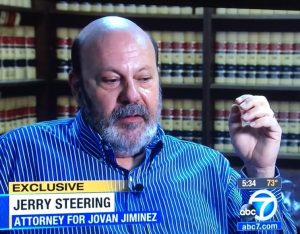 CALIFORNIA PENAL CODE SECTION 69 LAWYER
CALIFORNIA PENAL CODE SECTION 69 LAWYER
